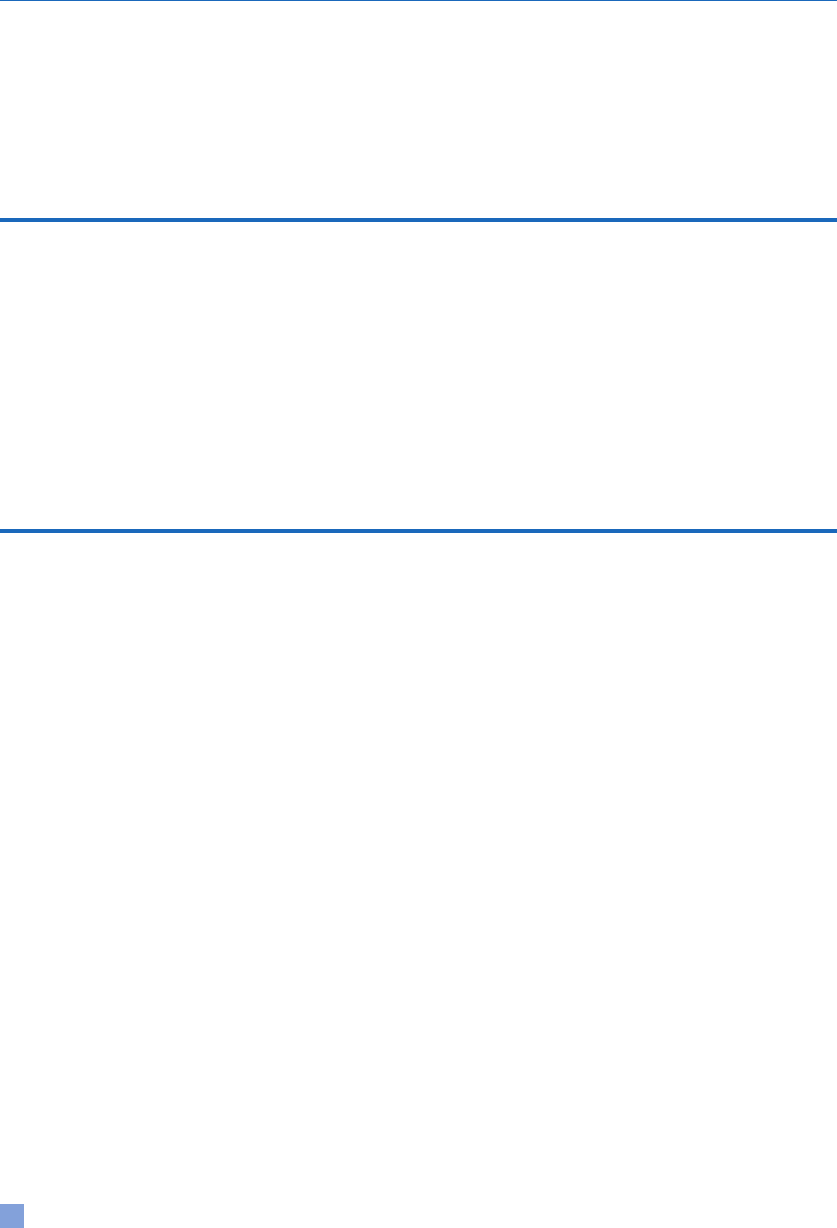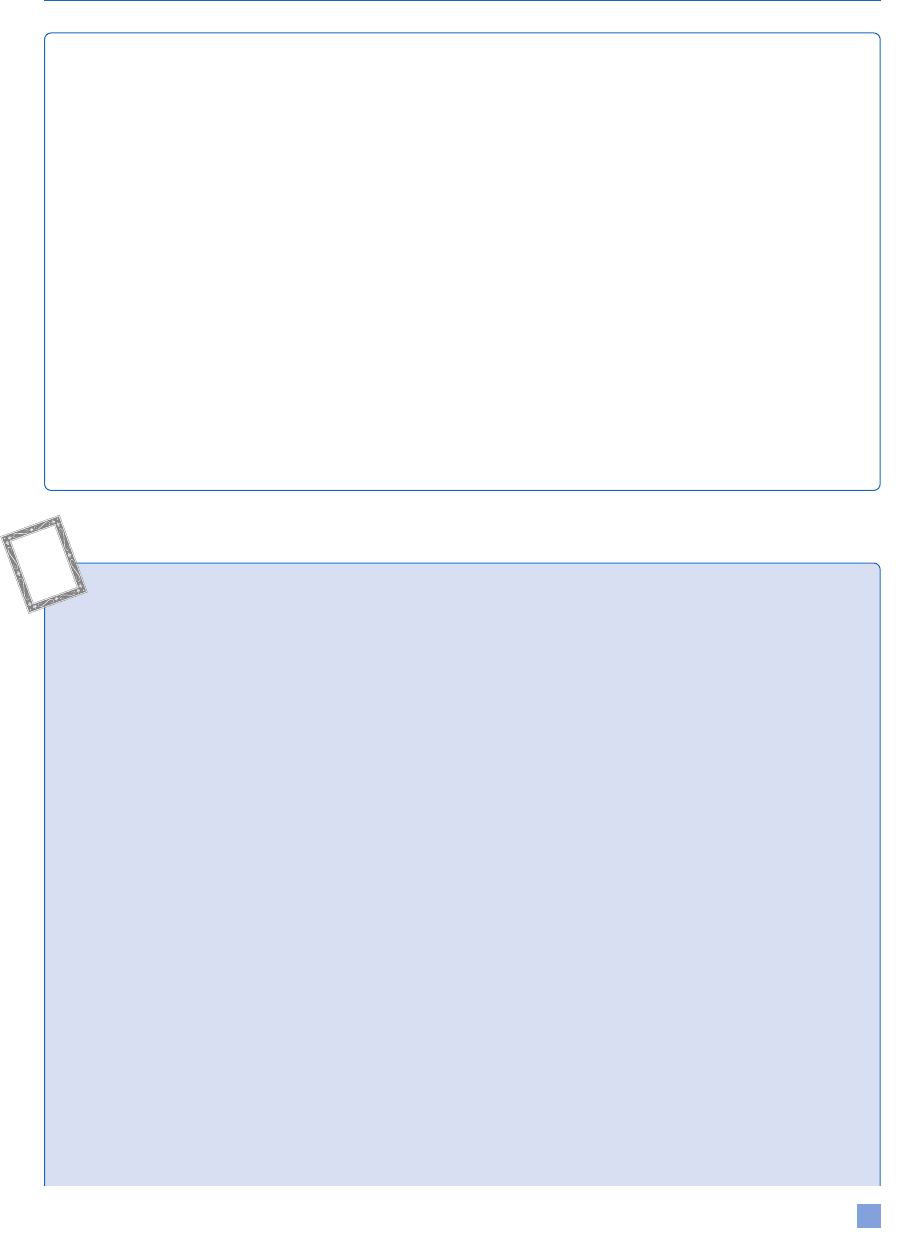Onkvisit S., Shaw J. International Marketing: Analysis and Strategy
Подождите немного. Документ загружается.


To prevent the importation into the USA of
counterfeits and, to a lesser extent, gray market
goods, a trademark owner whose mark is accepted
for the Principal Register can register a mark with
the US Customs Service for the purpose of pre-
venting entry of goods from bearing an infringing
mark.The Customs Service distinguishes colorable
imitation from counterfeit trademark.A colorable
imitation is a mark so similar as to be confused
with a registered mark, whereas a counterfeit
trademark is basically indistinguishable from a
registered trademark. Colorable imitations are
treated more leniently in that they can still gain
entry as long as the objectionable mark is removed.
However, in the case of counterfeits, the Customs
Reform and Simplification Act of 1978 allows the
seizure as well as forfeiture to the government of
any articles bearing a counterfeit trademark.
PACKAGING: FUNCTIONS AND
CRITERIA
Much like the brand name, packaging is another
integral part of a product. Packaging serves two
primary purposes: functional and promotional.First
and foremost, a package must be functional in the
sense that it is capable of protecting the product at
minimum cost.
If a product is not manufactured locally and has
to be exported to another country, extra protection
is needed to compensate for the time and distance
involved. A country’s adverse environment should
also be taken into account. When moisture is a
problem, a company may have to wrap pills in foil
or put food in tin boxes or vacuum-sealed cans.
However, the type of package chosen must be eco-
nomical. In Mexico, where most consumers cannot
afford to buy detergents in large packages, deter-
gent suppliers found it necessary to use plastic bags
for small packages because cardboard would be too
expensive for that purpose.
For most packaging applications, marketers
should keep in mind that foreign consumers are
more concerned with the functional aspect of a
package than they are with convenience. As such,
there is usually no reason to offer the great variety
of package sizes or styles demanded by Americans.
Plastic and throw-away bottles are regarded as being
wasteful, especially in LDCs, where the labor cost
for handling returnables is modest. Non-American
consumers prefer a package to have secondary func-
tions. A tin box or a glass bottle can be used after
the product content is gone to store something else.
Empty glass containers can be sold by consumers to
recoup a part of the purchase price.
From the marketing standpoint, the promotional
function of packaging is just as crucial as the func-
tional aspect.To satisfy the Japanese preference for
beautiful packaging, Avon upgraded its inexpensive
plastic packaging to crystalline glass. Similarly, BSR
packs its product into two cartons, one for shipping
and one for point-of-purchase display, because
Japanese buyers want a carton to be in tip-top con-
dition. The successful campaign for Bailey’s Irish
Cream in the USA included a fancy gold foil box
package that promotes this whiskey-based drink’s
upscale image. In any case, packaging does not have
to be dull. Novel shapes and designs may be used to
stimulate interest and create excitement.
MANDATORY PACKAGE MODIFICATION
A package change may be either mandatory or at the
discretion of the marketer. A mandatory change is
usually necessitated by government regulations.
Sometimes, it is for safety and other reasons. Some-
times, packaging regulations are designed more
for protection against imports than for consumer
protection.
Several countries require bilinguality (e.g.,
French and English in Canada, and French and
Flemish in Belgium). This requirement may force
the manufacturer to increase package size or shorten
messages and product name, since a bilingual pack-
age must have twice the space for copy communica-
tions. In some cases, modification is dictated by
mechanical or technical difficulties, such as the
unavailability of certain typographic fonts or good
advertising typographers.
In many cases, packaging and labeling are
closely related. Packages may be required to
describe contents, quantity, manufacturer’s name
336
BRANDING AND PACKAGING STRATEGIES

and address, and so on in letters of designated sizes.
Any pictorial illustration that is used should not be
misleading. In Singapore, certain foods must be
labeled to conform to defined standards. When
terms are used that imply added vitamins or miner-
als (e.g., enriched, fortified, vitaminized), packages
must show the quantities of vitamins or minerals
added per metric unit. In addition, if the product is
hazardous in any way, marketers should adopt the
United Nations’ recommendations for the labeling
and packaging of hazardous materials.
Exporters of textile products must conform to
countries’ varying regulations. Spain has specific
and extensive requirements concerning fiber
content, labeling, and packaging. In addition to its
flammability requirements, Sweden’s labeling regu-
lations include size, material, care, and origin.
Venezuela requires all packaged goods to be labeled
in metric units while specifically prohibiting dual
labeling to show both metric and nonmetric units.
Germany wants the description of fiber content to
be in German, but labeling for Denmark must be in
Danish or kindred. In the case of France, care label-
ing (if used) must meet an International Standard-
ization Organization (ISO) directive.
As discussed in Chapter 10, countries’ different
measurement systems may necessitate some form of
product modification, and necessity applies to pack-
aging as well.Product,toiletries included, cannot be
sold in Australia in ounces. The Australian regula-
tions require products to be sold in metric numbers,
in increments of 25 mm. In Germany, liquid prod-
ucts must be bottled or packaged in standard metric
sizes. Interestingly, the USA, a nonmetric nation,
has the same requirement for liquor products.
The European Union’s Directive on packaging
and packaging waste, taking effect in 1994, harmo-
nizes the national measures on the management of
packaging waste among the member states while
ensuring that restrictions on packaging do not
create trade barriers. Setting targets for both recov-
ery and recycling of waste, the Directive requires
the member states to ensure that 50 to 65 percent
of all waste is recovered for waste stream and that
25 to 45 percent is recycled.
22
OPTIONAL PACKAGE MODIFICATION
Optional package modification, although not
absolutely necessary, may have to be undertaken for
marketing impact or for facilitating marketing activ-
ities.Through accidents and history, users in many
countries have grown accustomed to particular
types of packages. Mayonnaise, cheese, and mustard
come in tubes in Europe, but mustard is sold in jars
in the USA. Orange bottles are popular in the
Netherlands. While non-Dutch beer drinkers all
over the world readily recognize a green Heineken
bottle, the domestic Heineken beer comes in a
brown bottle. Alfred H. Heineken designed the
famous green bottle and logo with the red star and
the black banner bearing the brand name.
In selecting or modifying a package, a marketer
should consider local conditions related to purchas-
ing habits. Products conventionally sold in packs in
the USA are not necessarily sold that way elsewhere
and may require further bulk breaking. This phe-
nomenon is partly the result of lower income levels
overseas and partly the result of a lack of unit
pricing, which makes it difficult for buyers to see
any savings derived from the purchase of a bigger
package. Foreign consumers may desire to buy one
bottle of beer or soft drink at a time instead of
buying a six-pack or eight-pack. Likewise, one cig-
arette, not the whole pack, may be bought in a
purchase transaction.
For Unilever, the $50 billion Anglo-Dutch con-
sumer goods multinational has mastered the art of
selling products in tiny packages costing a few cents
each. Its Indian subsidiary, Hindustan Lever Ltd.,
began selling single-use sachets of Sunsilk shampoo
for 2 to 4 cents.These mini-packages now account
for half of Hindustan Lever’s $2.4 billion in sales in
India. Unilever’s Rexona brand deodorant sticks sell
for 16 cents and up, and are very popular in India,
the Philippines, Bolivia, and Peru. A nickel-size
Vaseline package and a tube containing enough
Close-Up toothpaste for twenty brushings sell
for about 8 cents each. In Nigeria, Unilever sells 3-
inch-square packets of margarine that don’t need
refrigeration.
23
1111
2
3
4
5
6
7
8
9
10111
1
2
3
4
5
6
7
8
9
20111
1
2
3
4
5
6
7
8
9
30
1
2
3
4
5
6
7
8
9
40
41
42
43
44
45111
337
BRANDING AND PACKAGING STRATEGIES

In addition to conditions of use, other cultural
factors should be taken into consideration since such
factors often determine and influence consumer
preference. Although the UHT (ultra-high temper-
ature) process for packaging milk and juices in unre-
frigerated cartons has long been popular in Europe
and Asia, it took quite a while for American con-
sumers who were accustomed to fresh products to
start accepting aseptic packaging.
Symbols and colors of packages may have to be
changed to be consistent with cultural norms. If
packages are offensive, they must be made more
acceptable if the product is to be marketed success-
fully. For example, the controversial Jovan pack-
ages, with their sexual connotations, can prove to
be too suggestive in some countries. In Japan, since
manufacturers of condoms have female customers
in mind, packaging tends to be cute.
Sometimes, it is difficult to tell whether package
modification is mandatory or optional.Take the case
of Germany’s “green dot” packaging laws. Since the
early 1990s, Germany has required manufacturers,
distributors, and retailers to take back sales pack-
aging (used packaging materials) either directly
from the consumer’s domicile or from designated
local collection points. Those manufacturers who
participate in the “green dot” program are exempted
from this requirement.The green dot is the symbol
which has been adopted by the Duales System
Deutschland GmbH (DSD – Dual System of
Germany), a corporation established in 1990, with
over 400 participating companies (shareholders).
The DSD collects a fee from the participating man-
ufacturers for the right to display the green dot
symbol on the products. The revenue is used to
finance local packaging waste collection and recy-
cling programs.The green dot tells consumers that
such packaging may not be returned to the retailer
but should be consigned to specially designated col-
lection containers or be taken to the local recycling
center.The symbol also indicates that the packaging
will be recycled or reused rather than dumped or
incinerated.While goods without the green dot are
not illegal, they are unlikely to be accepted by the
market – retailers, wholesalers, and importers.The
DSD estimates that over ten billion units currently
being marketed in Germany carry the green dot.
Most other European Union countries have ini-
tiated similar green dot programs. Japan’s Packaging
Recycling Law requires manufacturers to pay costs
associated with collection, sorting, transportation,
and recycling of all paper and plastic containers and
packaging. Importers are held responsible for paying
the recycling costs of imported products.
One helpful sign that should reduce packaging
confusion is the European Union’s standardization
attempt. Changes in the EU’s food packaging
requirements should allow foreign food manufactur-
ers and packaging agents to follow one unified EU
regulation. Although size requirements differ by
product, the EU has harmonized the sizes of sealed
packages and containers.The uniformity assists con-
sumers in comparing prices for the same quantity,
thus abolishing the need for unit pricing. EU packag-
ing regulations also help to promote conservation by
decreasing the amount of paper used in packaging.
Because there is no EU-wide general product-
labeling directive, manufacturers have to label their
products differently for each country, thus increas-
ing expenses.There is also a question about language
requirements.The EU suggests that most products
should have at least two EU official languages so as
to increase the marketability of the products. In
terms of what is to be placed on the product label,
EU officials recommend the following: (1) the name
of the product, (2) a name of the manufacturer or
distributor within the marketing country, (3) any
care conditions, (4) special storage conditions, (5)
country of origin, especially where labels might
mislead, (6) metric requirements, and (7) list of
chemicals/ingredients included.
CONCLUSION
A product is a bundle of utilities, and the brand and
package are part of this bundle. There is nothing
unusual about consumers’ reliance on brand names
as a guide to product quality. As shown by the
perfume industry, the mystique of a brand name
may be so strong as to overshadow the product’s
338
BRANDING AND PACKAGING STRATEGIES

physical attributes. When practiced and well exe-
cuted, branding allows a commodity to be trans-
formed into a product. In doing so with the aid of
product differentiation, brand loyalty is created, and
the product can command a premium price.
Branding decisions involve more than merely
deciding whether or not a product should be
branded. Branding entails other managerial deci-
sions. A manufacturer must decide whether to use
its own brand or that of its dealer on its product.A
marketer must also determine whether to use a
single brand for maximum impact or multiple
brands to satisfy the different segments and markets
more precisely. Regardless of the number of brands
used, each brand name must be selected carefully
with the international market in mind. Once
selected, the brand name must be protected through
registration, and other measures should be taken to
prevent any infringement on that name.
Like the brand name, which may have to be
varied from one country to another, packaging
should be changed when needed. Mandatory mod-
ification of packaging should not be considered a
problem because the marketer has no choice in the
matter – if a marketer wants to market a product,
the marketer must conform to the country’s stated
packaging requirements. Unilever, for instance, has
to conform to the French requirement of selling
cube-shaped, not rectangular, packs of margarine.
Its descriptions for mayonnaise and salad dressing
also have to vary from country to country.
Optional or discretionary packaging modifica-
tion, in contrast, is a more controllable variable
within a marketer’s marketing mix. Usually, discre-
tionary packaging is related more to product pro-
motion, and it can take on the same importance as
mandatory packaging. Soft-drink containers are a
good example of how packaging requirements must
be observed. In many countries, bottles are manu-
factured in metric sizes because of government
requirements, and the containers must be made
of glass because consumers abroad regard plastic
throw-away bottles as being wasteful. Therefore,
both mandatory and optional packaging changes
should be considered at the same time.
1111
2
3
4
5
6
7
8
9
10111
1
2
3
4
5
6
7
8
9
20111
1
2
3
4
5
6
7
8
9
30
1
2
3
4
5
6
7
8
9
40
41
42
43
44
45111
339
BRANDING AND PACKAGING STRATEGIES
CASE 11.1 PLANET RALPH: THE GLOBAL MARKETING STRATEGY OF
POLO RALPH LAUREN
Deirdre Bird, Providence College, and Helen Caldwell, Providence College
Polo Ralph Lauren (PRL) is a highly successful US company. The thirty-fifth anniversary of the company has
been covered in glowing terms across the globe. For example, Ralph Lauren was interviewed for the prestigious
British broadsheet,
The Sunday Times
, followed by a lecture at The British Museum in London.
Vogue
magazine
profiled Lauren as “The Man Behind the Mega-Brand” while making the cover of both
GQ
(as a Man of the Year)
and
Architectural Digest
.
Time
magazine presented Ralph Lauren as “A Bronx Cowboy in Europe,” outlining
Lauren’s rise from Bronx kid Ralph Lifschitz to world-famous designer Ralph Lauren.
Today’s world of luxury in fashion
The primary customers for luxury products tend to be women aged between 30 and 50 in the upper income brack-
ets, where the household earns over $100,000. In the USA, this categorization accounts for over fifteen million
households. In the upper-middle category (with household incomes of $75,000 to $100,000), there are an addi-
tional twelve million households. However, in what has come to be termed the “democratization of luxury,” people
in all income brackets want to participate in the luxury market, even if that means buying nothing more than a
$4 chai latte at Starbucks, or a $20 scarf at Gucci. Ralph Lauren recognized this himself when he described the
desire for luxury as “aspirational.”

Approximately thirty-five companies share 60 percent of the luxury goods market. The six top competitors,
one of which is Polo Ralph Lauren, have annual revenues greater than $1 billion; fifteen to twenty companies
have revenues between $500 million and $1 billion; and ten have revenues between $100 million and $500 million.
These companies tend to have a product focus and thus do not all compete on equal terms in the various luxury
categories. For instance, Richemont, a Swiss conglomerate, deals largely in watches, jewelry, and writing instru-
ments, with brands such as Cartier, Piaget, and Mont Blanc. Hermes focuses on leather goods, selling ladies’ bags
for upwards of $4000. LVMH is the industry leader in luxury goods, followed by Richemont, and Gucci Group.
Coming in fourth in the industry is Polo Ralph Lauren.
The Polo Ralph Lauren concept
PRL is a family-controlled company, in that its Chairman and CEO is designer and founder Ralph Lauren. However,
the company is quoted publicly on the New York Stock Exchange. The company derives its revenues from three
sources: retail, wholesale, and licensing.
The retail segment operates over 236 outlet and full-price stores, including the magnificent flagship stores in
Manhattan, London, Paris, Boston, and Brussels. Retail sales contributed almost $1 billion to revenue in 2002.
The wholesale segment consists of two units: Polo Brands and Collection Brands, with each unit selling its
own discrete brands to department and specialty stores, and to PRL-owned and licensed retail stores.This segment
is responsible for the majority of the corporation’s net sales (almost $1.2 billion in fiscal year 2002).
The licensing segment accounts for almost 10 percent of total sales, generating revenue from royalties through
licensing alliances, whereby the licensee is granted the right to use the company’s trademarks in connection with
manufacturing and sale of certain products in specific geographical areas. As a result of a corporate strategy of
increasing its global presence, PRL acquired its Italian licensee, Poloco S.A.S., thus allowing for greater inte-
gration of its European wholesale operations.
The Polo Ralph Lauren strategy
PRL intends to grow by brand extension and by globalization. In its brand extensions, the company aims to expand
by “creating luxury and lifestyle brands that inspire people to live their dreams.” The company has developed
apparel labels which segment the upper end of the luxury market into Purple Label, Women’s Collection and
Black Label, and in its home furnishings division it has developed the Ralph Lauren Home collection. At a lower
price point, Polo Blue Labels have been developed, and will be distributed exclusively in PRL stores in the USA,
and in specialty stores in Europe, Asia, and Australia. In arrangements with its licensees in department stores,
the company has developed Lauren for women and Lauren bedding and bath products.The recently acquired Club
Monaco concept (formerly a fifteen-category Canadian company) has been rationalized to three categories of
men’s, women’s, and accessories.
This brand extension strategy has required, and will continue to require, a very large advertising budget.The
company uses a combination of television and multi-page magazine advertising, intended to illustrate the luxuri-
ous aspect of the brands. Advertising expenses in 2002 amounted to almost $80 million, or approximately 4
percent of net sales.
The global strategy
Based on a belief that there are enormous opportunities in Western Europe the company has plans to open
new Ralph Lauren stores in Europe through the next several years. Similarly, development is planned in Asia,
specifically in Japan, Hong Kong, and Korea, these latter countries being managed by licensed partners.
340
BRANDING AND PACKAGING STRATEGIES

Currently, the USA accounts for almost 73 percent of company sales. Europe and Japan represent approxi-
mately 10 percent each, and Canada, Korea, Australia, and other small markets account for the remaining 7
percent of sales.Thus in the past Lauren has relied heavily on US sales. Much of this has come from department
stores.
Points to consider
As Lauren ponders his corporation’s future, the questions he needs to address are as follows:
1 Can an American brand built on the quintessential “American dream” succeed globally?
2 Will the PRL form of lifestyle marketing succeed globally?
3 Which brands would present the best global opportunities for PRL?
Sources:
“Every Cloud Has a Silver Lining,”
The Economist
, March 21, 2002; Rebecca Gardyn, “Oh,The Good Life,”
American
Demographics
, November 2002; Lauren Goldstein, “Lauren: A Bronx Cowboy in Europe,”
Time: Global Business
, September
2002; Claire A. Kent
et al
.,“Making the Sale,”
Morgan Stanley Dean Witter
, March 11, 1999; and Polo Ralph Lauren, Annual
Corporate Report, 2002.
CASE 11.2 MAJORICA S.A. VS. R.H. MACY
Majorca is a place well known for its pearls. One Spanish firm, Majorica S.A., has used Majorica, an ancient
name for Majorca, since 1954 as its trade name as well as a brand name to describe its pearls.
Majorica was alarmed to learn that R.H. Macy, a major US department store chain, was selling Majorca-
labeled pearls that were made by Hobe Cie. Ltd., a competitor of Majorica S.A. Contacts with Macy produced
no fruitful results in resolving the difficulty. Macy felt that it had a right to use the name in question because
Majorca was the name of an island and because the pearls in question were indeed made there.
Subsequently, Majorica filed a lawsuit in a federal court, asking for a judgment to stop Macy using the name.
Majorica S.A. cited trademark infringement as the reason for seeking relief. It argued that Macy’s action caused
confusion among consumers as well as erosion of goodwill.
Points to consider
1 Is Majorica a valid brand name or just a generic trademark? Does the fact that it is the name of a place
(i.e., island) affect the registration eligibility and legal protection of Majorica S.A.?
2 Was Macy’s action legally defensible? Assuming that you are a federal court judge, do you think that Macy’s
use of the name could cause consumer confusion? Do you think that Macy’s labeling constituted trademark
infringement? Can the branding/labeling be somehow modified to prevent consumer confusion?
QUESTIONS
1 What are the requirements that must be met so that a commodity can effectively be transformed into a
branded product?
2 Explain the “least dependent person” hypothesis and its branding implications.
3 When is it appropriate to use multiple brands in (a) the same market and (b) several markets/countries?
1111
2
3
4
5
6
7
8
9
10111
1
2
3
4
5
6
7
8
9
20111
1
2
3
4
5
6
7
8
9
30
1
2
3
4
5
6
7
8
9
40
41
42
43
44
45111
341
BRANDING AND PACKAGING STRATEGIES

4 What are the characteristics of a good international brand name?
5 Explain these legal requirements related to branding: (a) registration, (b) registration eligibility, (c) use, (d)
renewal, and (e) generic trademark.
6 Distinguish colorable imitation from counterfeit trademark.
7 Cite the factors that may force a company to modify its package for overseas markets. Discuss both manda-
tory and optional modification.
DISCUSSION ASSIGNMENTS AND MINICASES
1 Should farmers brand their exported commodities (e.g., soybean, corn, beef)?
2 Some retailers (e.g., Sears) and manufacturers (e.g., General Motors) place their trademarks on products
actually made by foreign suppliers. Discuss the rationale for these actions by these firms.
3 Discuss how certain English letters, prefixes, suffixes, syllables, or words create pronunciation difficulties for
those whose native language is not English.
4 Is Hyundai a good name to use for an international brand? On what do you base your evaluation?
5 Go to the soft drink section of a supermarket. How many different types of soft-drink packages are there
(in terms of size, form, and so on)? Should any of them be modified for overseas markets?
NOTES
1
H.J. Heinz Company 2000
(second quarter), 9.
2 “In Business This Week,”
Business Week
, September 27, 1993, 50.
3 Martin S. Roth, “Effects of Global Market Conditions on Brand Image Customization and Brand
Preference,”
Journal of Advertising
24 (winter 1995): 55–75.
4 T.C. Melewar, John Saunders, and John M.T. Balmer,“Cause, Effect and Benefits of a Standardised Corporate
Visual Identity System of UK Companies Operating in Malaysia,”
European Journal of Marketing
35 (No.
3, 2001): 414–27.
5 Peter C. Verhoef, Edwin J. Nijssen, and Laurens M. Sloot, “Strategic Reactions of National Brand
Manufacturers towards Private Labels: An Empirical Study in the Netherlands,”
European Journal of
Marketing
36 (No. 11, 2002): 1309–26.
6 Steve Burt, “The Strategic Role of Retail Brands in British Grocery Retailing,”
European Journal of
Marketing
34 (No. 8, 2000): 875–90.
7 “In Desktop PCs, IBM Clicks on ‘Quit,’”
Business Week
, January 21, 2002, 40.
8 “Quanta’s Quantum Leap,”
Business Week
, November 5, 2001, 79–81; “Don’t Be Fooled by the Name on
the Box,”
Business Week
, June 17, 2002, 18.
9 “Swatch: Ready for Net Time?”
Business Week
, February 14, 2000, 61.
10 “Breaking into the Name Game,”
Business Week
, April 7, 2003, 54.
11 Stuart J. Agres and Tony M. Dubitsky, “Changing Needs for Brands,”
Journal of Advertising Research
36
(January/February 1996): 21–30.
12 Dana L Alden, Jan-Benedict E.M. Steenkamp, and Rajeev Batra, “Brand Positioning Through Advertising in
Asia, North America, and Europe:The Role of Global Consumer Culture,”
Journal of Marketing
63 (January
1999): 75–87.
13 “Nivea, Nestlé (AAC) Extend Bounds in Global Mega Brand Survey,”
Bangkok Post
, April 3, 2003.
342
BRANDING AND PACKAGING STRATEGIES

14 Julie Snyder, “Promoting Consumer Goods and Services in Quebec, Canada’s Distinct, French-Speaking
Market,”
Business America
, November 1, 1993.
15 Shi Zhang and Bernd H. Schmitt, “Creating Local Brands in Multilingual International Markets,”
Journal
of Marketing Research
, 38 (August 2001): 313–25.
16 “Drastic Cuts Are in Store for Unilever,”
San José Mercury News
, February 23, 2000.
17 “Scott Rolls Out a Risky Strategy,”
Business Week
, May 22, 1995, 48.
18 “For Sale: Amoco Signs, Cheap,”
Business Week
, August 14, 2000, 8.
19 France Leclerc, Bernd H. Schmitt, and Laurette Dube, “Foreign Branding and Its Effect on Product
Perceptions and Attitudes,”
Journal of Marketing Research
31 (May 1994): 263–70.
20 “UK Queen Registers Trade Marks,”
The Nation
, July 8, 2000.
21 Sidney A. Diamond,
Trademark Problems and How to Avoid Them
, rev. edn (Chicago: Crain Books, 1981),
20–2.
22 Jim Golsen, “Packaging and Recycling Requirements,”
Export America
(May 2000).
23 “Ideas for a Changing World,”
Business Week
, August 26, 2002, 112–14.
1111
2
3
4
5
6
7
8
9
10111
1
2
3
4
5
6
7
8
9
20111
1
2
3
4
5
6
7
8
9
30
1
2
3
4
5
6
7
8
9
40
41
42
43
44
45111
343
BRANDING AND PACKAGING STRATEGIES

344
In a market system, all aspects of economic activity are interdependent, and the whole cannot
function properly if any major element is not in its place.
Michel Camdessus, Managing Director, International Monetary Fund
■ Direct and indirect selling channels
■ Types of intermediaries: direct channel
Foreign distributor
Foreign retailer
State-controlled trading company
End user
■ Types of intermediaries: indirect channel
Export broker
Manufacturer’s export agent or sales
representative
Export management company (EMC)
Cooperative exporter
Purchasing/buying agent
Country-controlled buying agent
Resident buyer
Export merchant
Export drop shipper
Export distributor
Trading company
■ Channel development
■ Channel adaptation
■ Channel decisions
■ Determinants of channel types
Legal regulations
Product image
Product characteristics
Middlemen’s loyalty and conflict
Local customs
Power and coercion
Control
■ Distribution in Japan
■ Selection of channel members
■ Representation agreement and termination
■ Black market
■ Gray market
Causes
Legal dimension
Ethical dimension
Product quality
Manufacturers’ marketing strategies
■ Distribution of services
■ Conclusion
■ Case 12.1 The international record industry
■ Case 12.2 Schwarzkopf, Inc. distribution
network
Channels of distribution
Chapter 12
CHAPTER OUTLINE

1111
2
3
4
5
6
7
8
9
10111
1
2
3
4
5
6
7
8
9
20111
1
2
3
4
5
6
7
8
9
30
1
2
3
4
5
6
7
8
9
40
41
42
43
44
45111
CHANNELS OF DISTRIBUTION
PURPOSE OF CHAPTER
All products need competent distribution. Unfortunately, the distribution of blood diamonds is relatively
competent. In any case, any products, no matter how good they are, are unlikely to gain market acceptance
without being made available at a time and place that are convenient to final users.
The purpose of this chapter is to discuss the various channels of distribution that are responsible for
moving products from manufacturers to consumers. Both international and domestic channels are exam-
ined.The chapter describes the varieties of intermediaries (i.e., agents, wholesalers, and retailers) involved
in moving products between as well as within countries. The tasks and functions of the various intermedi-
aries will be examined. It should be kept in mind that certain types of intermediaries do not exist in some
countries and that the pattern of use as well as the importance of each type of intermediary varies widely
from country to country.
A manufacturer is required to make several decisions that will affect its channel strategy, including the
length, width, and number of distribution channels to be used.The chapter examines the various factors that
influence these decisions. For an operation to be a success, a good relationship among channel members
is vital. There is no one single distribution method that is always ideal in all markets. Thus this chapter
examines channel adaptation.
One needs money to wage war, and diamonds are just
as good as money. Diamonds are portable and anony-
mous. Most of Sierra Leone’s diamonds are smuggled
into Liberia for sale. It is practically impossible to
identify the origins of diamonds. As a result, diamonds
are a currency of choice for thugs and rebels in
Africa. At one time, diamonds from the African war
zones accounted for 10 to 15 percent of the world
supply.
In Angola, diamonds helped Unita, an Angolan
rebel group, to launch a civil war in the 1990s. Such
blood diamonds resulted in half a million Angolans
being killed and four million Angolans being dis-
placed. The Revolutionary United Front, a rebel unit
that barters diamonds for weapons, is unbelievably
brutal. Its soldiers chopped off limbs of innocent
people to cause fear. Unita’s cruelty led the USA to
impose a diamond embargo on the group in 1998.
While the United Nations Children’s Fund has
declared that Angola is the worst place on earth to
be a child, it took the United Nations six years before
imposing the embargo.
Unita does not act alone. It has many accomplices
to help it to use diamonds to finance its ruthless oper-
ations. Corrupt governments, pitiless rebels, and
porous borders in Angola, Congo, and Sierra Leone
have allowed diamonds to become agents of slave
labor, dismemberment, murder, mass exodus, and eco-
nomic collapse. Many diamond dealers in Antwerp
do not care to know where the stones are from, and
the world’s largest diamond bourse in Antwerp has
“extremely lax regulations.” At the same time,
Liberia, Uganda, Rwanda, and Zimbabwe have passed
off smuggled diamonds as their own by supplying false
but official certificates of origin.
Finally, governments and the diamond industry
have reached a global accord that stops trade in dia-
monds from the conflict zones. For rough diamonds
to be exported, they must be certified that they are
not from the territory held by the rebels. Any private
exporters or importers who break the rules will lose
their trading licenses. Countries that break rules will
be barred from selling diamonds, and they may face
international sanctions.
MARKETING ILLUSTRATION BLOOD DIAMONDS AND DEBEERS
345
